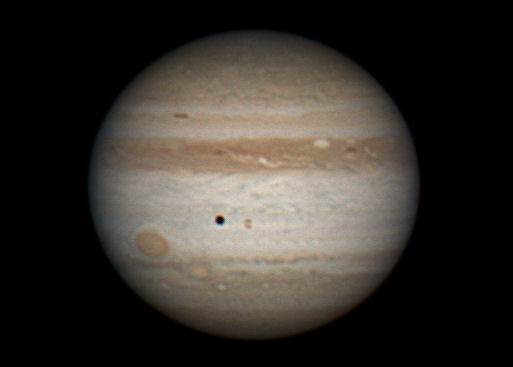AURORA ALERTS: Did you miss the Northern Lights? Next time get a wake-up call from Space Weather PHONE | | |
COMET HARTLEY 2 UPDATE: Is Comet Hartley 2 sprouting a tail? A series of five-minute integrations taken last night by Gregg Ruppel of Ellisville, Missouri, seems to show a growing elongation of the comet's atmosphere: images.
APPROACHING COMET: Green comet 103P/Hartley 2 is approaching Earth for a close encounter on Oct. 20th. At that time, the comet will be only 11 million miles from Earth and should be dimly visible to the naked eye from dark sky sites. It already looks great through backyard telescopes:

Amateur astronomer Rolando Ligustri took this picture on Oct. 2nd using a 14-inch Global Rent-a-Scope in New Mexico. It shows Comet Hartley beside the spectacular Pacman Nebula (NGC 281), a star-forming cloud some ten thousand light years from Earth. "This is a very nice comet for telescopes and binoculars," says Martin Gembec who took a similar picture from his backyard observatory in the Czech Republic last night. "It has a [green atmosphere] almost 0.5 degrees wide and shines like a 7th magnitude star."
Two weeks after Comet Hartley has its close encounter with Earth, NASA will have a close encounter with the comet. The EPOXI spacecraft (formerly known as Deep Impact) is hurtling toward Comet Hartley now, and on Nov. 4th it will fly 435 miles from the comet's active icy nucleus. The encounter will mark only the fifth time in history that a spacecraft has been close enough to image a comet's core.
Until then, amateur astronomers can monitor the comet as it glides through the constellation Cassiopeia in the evening sky. A finder chart from Sky and Telescope shows the comet passing by a variety of stars and deep-sky objects, offering many photo-ops in the nights ahead.
more images: from Mike Holloway of Van Buren, Arkansas; from Mike Broussard of Maurice, Louisiana; from Dale Ireland of Silverdale, Washington; from Kevin Black of Winnipeg, Manitoba Canada; from Alan Dyer of near Cluny, Alberta, Canada; from Tamás Ábrahám of Zsámbék, Hungary
MUST-SEE PLANET: Jupiter's super-close encounter with Earth ended two weeks ago, right? Not so fast: The show is still going on. Jupiter is receding from Earth so slowly, the planet is practically as big and bright as it was on Sept. 20th. Russell Horn sends this picture taken just a few nights ago from the Comanche Springs Astronomy Campus in Texas:

"The view through my 8-inch refractor was stunning," says Horn. "The volcanic moon Io looked like a golden BB as it transited the colorful disk of Jupiter."
In Horn's image, Io's shadow is falling on a wide expanse of white clouds. This is where Jupiter's brown South Equatorial Belt (SEB) used to be--until it mysteriously disappeared earlier this year. Researchers think the great belt might simply be hiding, submerged beneath high-altitude cirrus clouds. If so, the SEB could pop up again at any time. The dramatic resurgence would be accompanied by a globe-straddling profusion of spots and cloudy swirls, clearly visible in backyard telescopes. Who will be the first to see it? Train your optics on that bright star high in the midnight sky; it could be you.
Sept. 2010 Northern Lights Gallery
[previous Septembers: 2009, 2008, 2007, 2006, 2005, 2004, 2002, 2001, 2000]
Potentially Hazardous Asteroids (
PHAs) are space rocks larger than approximately 100m that can come closer to Earth than 0.05 AU. None of the known PHAs is on a collision course with our planet, although astronomers are finding
new ones all the time.
On October 3, 2010 there were 1147 potentially hazardous asteroids.
Notes: LD means "Lunar Distance." 1 LD = 384,401 km, the distance between Earth and the Moon. 1 LD also equals 0.00256 AU. MAG is the visual magnitude of the asteroid on the date of closest approach. | | The official U.S. government space weather bureau |
| | The first place to look for information about sundogs, pillars, rainbows and related phenomena. |
| | Researchers call it a "Hubble for the sun." SDO is the most advanced solar observatory ever. |
| | 3D views of the sun from NASA's Solar and Terrestrial Relations Observatory |
| | Realtime and archival images of the Sun from SOHO. |
| | from the NOAA Space Environment Center |
| | from the National Solar Data Analysis Center |

